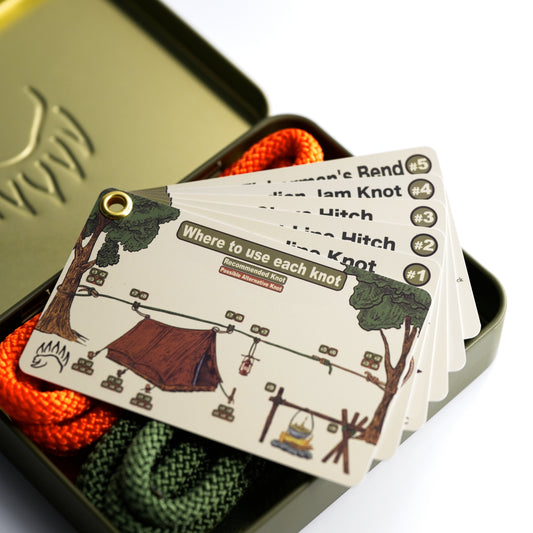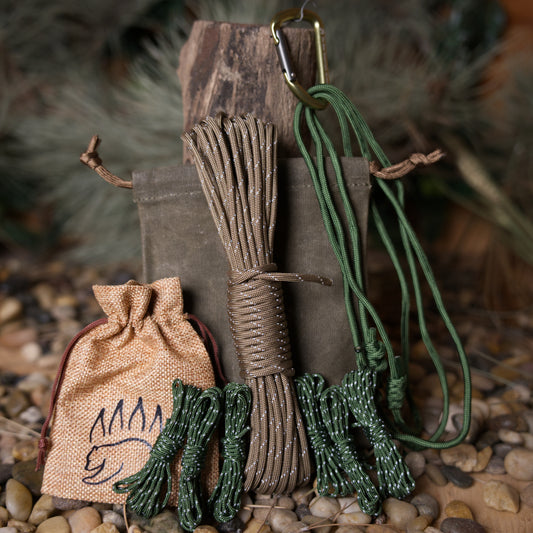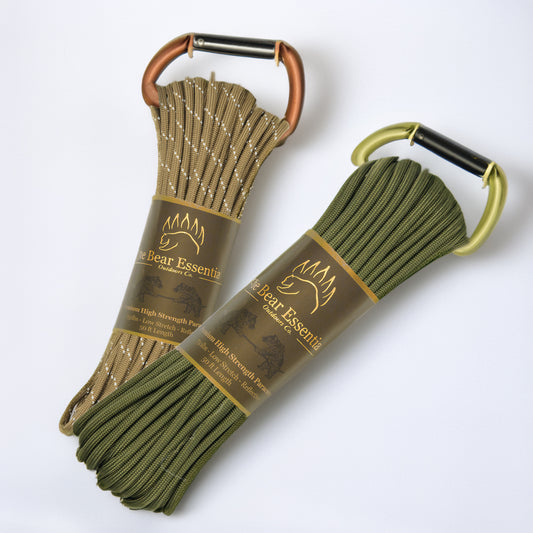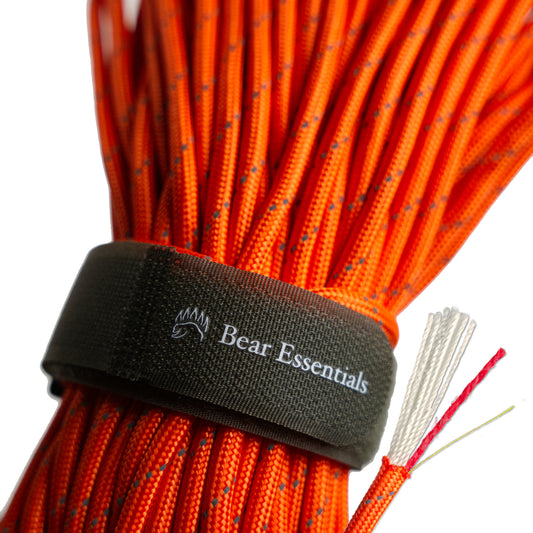How To Tie A Double Fisherman's Bend
Usage
The Double Fisherman’s Bend, also known as the Grapevine Knot, is one of the most trusted ways to securely join two ropes. This knot is essential for activities where safety is paramount, such as climbing, arboriculture, and search & rescue. Its structure provides both strength and shock absorption, making it ideal for high-stakes situations.
Why Learn the Double Fisherman's Bend?
If you’re serious about climbing or other rope-based activities, the Double Fisherman’s Bend is a must-know. Its reliability under tension and simplicity of inspection make it the go-to knot for joining ropes securely. Whether you're forming a Prusik loop or combining climbing ropes for a long abseil, this knot delivers confidence and durability.
Common Uses
- Climbing: Joining two ropes for extended abseils or securing a Prusik loop.
- Arboriculture: Creating strong, adjustable connections for tree work.
- Search & Rescue: Combining ropes for technical rescue operations.
- General Use: Backing up critical knots like the Figure-of-Eight Loop.
ABOK Number
(Ashley Book of Knots)
Other Names
TypeBend
|
Notable Features
- Incredible Strength: The knot’s structure ensures a secure connection under load.
- Compact and Reliable: Holds firm, even with thin or slippery ropes.
- Shock Absorption: Its coils provide extra security in dynamic or tense situations.
- Jamming Tendency: While secure, the knot can become nearly impossible to untie after being loaded heavily.
Similar Knots
Zeppelin Bend vs. Double Fisherman’s Bend
- Pros: The Zeppelin Bend is easier to untie and equally secure for joining ropes.
- Cons: Slightly bulkier and less intuitive to tie compared to the Double Fisherman’s Bend.
Figure-8 Bend vs. Double Fisherman’s Bend
- Pros: Easier to teach and inspect, making it beginner-friendly.
- Cons: Bulkier than the Double Fisherman’s Bend, especially with stopper knots added.
Triple Fisherman’s Knot vs. Double Fisherman’s Bend
- Pros: The Triple Fisherman’s Knot is more secure with high-lubricity ropes like Dyneema.
- Cons: Slightly more complex to tie and bulkier than the Double Fisherman’s.
Square Knot (Reef Knot) vs. Double Fisherman’s Bend
- Pros: Simple and quick to tie for non-critical tasks like securing bundles.
- Cons: Less secure under load and prone to slipping, making it unsuitable for critical applications.
Flat Overhand Bend vs. Double Fisherman’s Bend
- Pros: Compact and easy to tie for joining ropes.
- Cons: Tends to jam under tension and may not handle dynamic loads as well.
Sheet Bend vs. Double Fisherman’s Bend
- Pros: Excellent for joining ropes of different sizes or materials.
- Cons: Less secure under heavy or dynamic loads compared to the Double Fisherman’s Bend.
Butterfly Bend vs. Double Fisherman’s Bend
- Pros: Strong, stable, and well-suited for equalizing loads in climbing setups.
- Cons: Bulkier and more complex to tie than the Double Fisherman’s Bend.
History
The Double Fisherman’s Bend has ancient origins, with its structure evolving over time to become a staple in modern climbing and arboriculture.
Security Level
The Double Fisherman’s Bend is among the most secure bends available. It’s highly resistant to slipping and excels in joining stiff, slippery, or thin ropes. However, its tight binding nature makes it difficult to untie after heavy loading.
Downsides
- Nearly impossible to untie after heavy loads.
- Requires precise tying technique to avoid mismatched coils.
- Not ideal for applications needing frequent adjustments.
Structure
- Step 1: Place the ends of two ropes pointing in opposite directions. Start with one rope, wrapping it twice around the other.
- Step 2: Pass the working end back through the two coils and pull to tighten. This creates the first X-shaped knot.
- Step 3: Repeat the process on the other rope, wrapping in the opposite direction.
- Step 4: Pull both ropes together to cinch the knots tightly. Inspect to ensure the tag ends face opposite directions.
FAQ
Q1: Why is the Double Fisherman’s Bend so secure?
The knot’s dual strangle knots create high friction and resistance, ensuring it won’t slip under load.
Q2: Can it be untied after heavy use?
While secure, the knot binds tightly under tension, making it very difficult to untie after heavy loading.
Q3: How does the Triple Fisherman’s Knot differ?
The Triple Fisherman’s Knot adds an extra wrap to each coil, increasing friction and security for high-lubricity ropes like Dyneema or Spectra.
Q4: What’s the best alternative for an easily untied knot?
The Zeppelin Bend is a great alternative, offering security and ease of untying after use.
Q5: Can I use this knot for dynamic loads?
Yes, the Double Fisherman’s Bend handles dynamic loads well due to its shock-absorbing coils.
Important Notes on Safety
The Double Fisherman’s Bend is a reliable knot for life-critical applications but requires precise tying and inspection. Always leave long enough tail ends for added safety, and ensure the knot is tied correctly before applying heavy loads.









